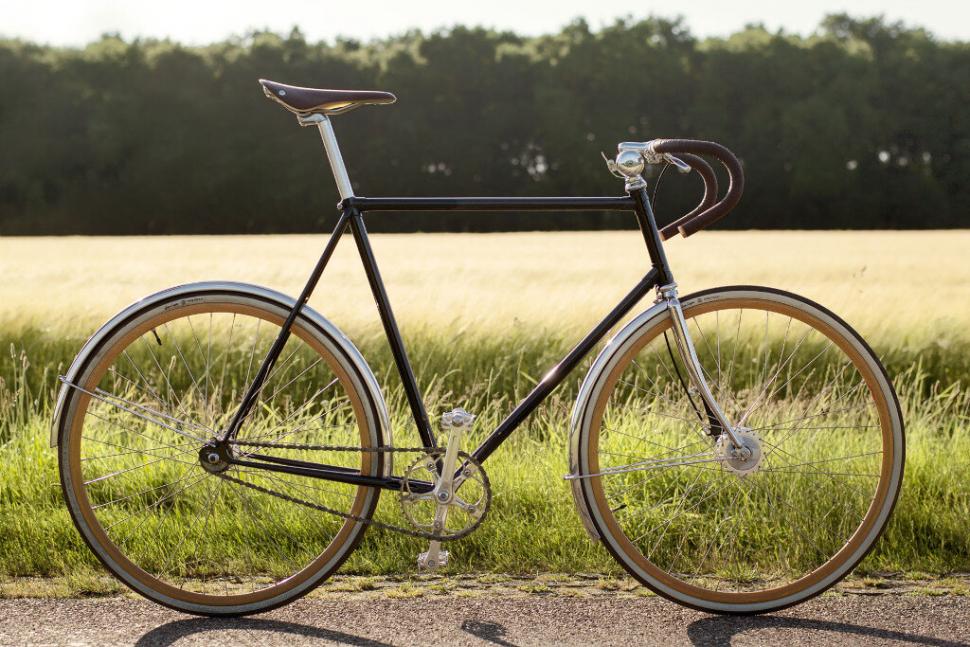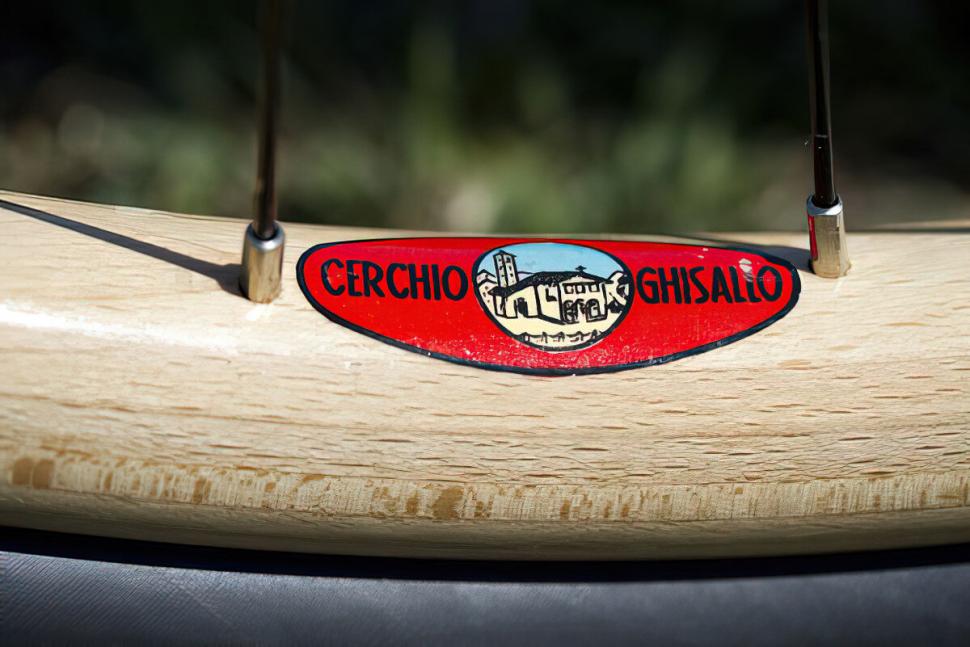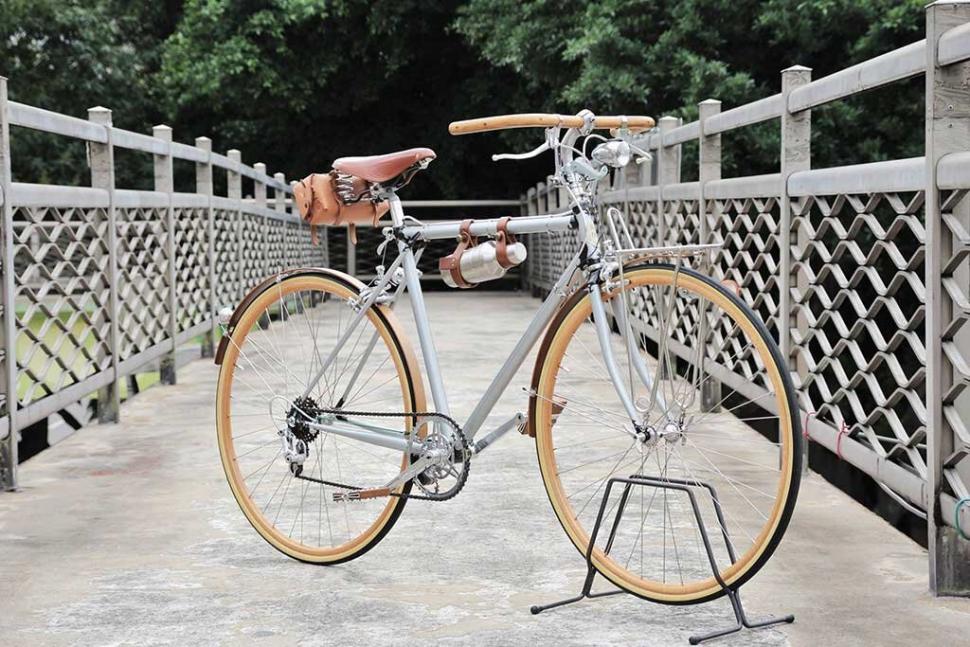- News
- Reviews
- Bikes
- Accessories
- Accessories - misc
- Computer mounts
- Bags
- Bar ends
- Bike bags & cases
- Bottle cages
- Bottles
- Cameras
- Car racks
- Child seats
- Computers
- Glasses
- GPS units
- Helmets
- Lights - front
- Lights - rear
- Lights - sets
- Locks
- Mirrors
- Mudguards
- Racks
- Pumps & CO2 inflators
- Puncture kits
- Reflectives
- Smart watches
- Stands and racks
- Trailers
- Clothing
- Components
- Bar tape & grips
- Bottom brackets
- Brake & gear cables
- Brake & STI levers
- Brake pads & spares
- Brakes
- Cassettes & freewheels
- Chains
- Chainsets & chainrings
- Derailleurs - front
- Derailleurs - rear
- Forks
- Gear levers & shifters
- Groupsets
- Handlebars & extensions
- Headsets
- Hubs
- Inner tubes
- Pedals
- Quick releases & skewers
- Saddles
- Seatposts
- Stems
- Wheels
- Tyres
- Health, fitness and nutrition
- Tools and workshop
- Miscellaneous
- Tubeless valves
- Buyers Guides
- Features
- Forum
- Recommends
- Podcast
feature
 Ghisallo manufacturing 1 (Steve Thomas)
Ghisallo manufacturing 1 (Steve Thomas)How Cerchio Ghisallo make classic wooden bike wheels in the heart of Lombardy
With its holy and poignant cyclist shrine, the remarkable hilltop cycling museum and its iconic climb, the legend of Ghisallo runs deep in cycling history... and yet humbly located just a few pedal strokes down the road from here is another slice of living cycling history: the Ghisallo wooden rim workshop. Yep, wooden rims!
If you follow - or have been involved with - pro road cycling for any length of time, then the name Ghisallo probably needs no introduction. Some may well have even made one of the holiest of pilgrimages in cycling terms to ride the sacred and gently sweeping climb of the same name, and perhaps even more so to visit the Madonna di Ghisallo Sanctuary, the most famous and impactful chapel dedicated to cyclists.
On the walls of this small and humbling place, you will see bikes and memorabilia from many of the greatest names in cycling; although the one that hits the hardest is without doubt the crumpled bike belonging to former local lad, Olympic champion and Motorola Cycling Team rider Fabio Casartelli, who died after crashing during the 1995 Tour de France. Just a few steps away from here is also the huge and impressive Ghisallo Cycling Museum, a fascinating place to spend a day for any cyclist.
These hallowed roads above Lake Como are laden in cycling history; although one the greatest gems of the area is all but hidden away, and lurks just 100 meters down the road from the museum and sanctuary.
As the road descends through a couple of twists and turns, you come across a fairly anonymous old style vehicle repair shop, much like you would expect to find all over rural Italy; and yet what lies behind this place, and through the back door of the workshop, is one of the most fascinating places that any cyclist with an appreciation for the history of the sport could imagine. This is the home of the tiny artisanal workshop of Ghisallo wooden rims, which have been produced by the Cermenati family since the end of World War 2.
Wooden rims were not uncommon in cycling during the first half of the last century, but inevitably modern materials such of steel and aluminium eventually took over (and were later joined by carbon). Antonio Cermenati was the first of the family to be involved in the manufacturing of wooden rims, and he was a partner in the once legendary d’Alessandro rim manufacturing company in Milan.
During and immediately following the war, Italy was suffering greatly from the aftereffects (as were most nations), and with the fast-evolving cycling marketplace, making wooden rims was a hard sell; so d’Alessandro retired from his business.
This was when Cermenati took over the tooling from the company and moved his family to the safety and tranquillity of the small village of Magreglio, where along with his son Giovanni they would start making wooden rims. Their chosen home and base just happened to be down the hill from sanctuary & museum, which was opened by triple Giro d’Italia winner Florenzo Magni, a good friend to Cermenati – and a man who also won the Tour of Flanders on wooden rims in 1949, 50 & 51, at a time when aluminium was slowly becoming the go to rim material.
After the war metallic materials, such as aluminium were in short supply, which created a short-lived resurgence in the wooden rim trade, and although that soon died down, but thanks to a growing appreciation for retro bikes and events appearing to cater for those who ride them Ghisallo has found an artisanal niche and currently sell around 1000-1500 units of mostly rims, mudguards, handlebars and other parts a year, and are currently also working on wooden balance bikes.
Behind the scenes
As seems to be the norm in the current retro-resurgence within cycling, you could well expect the Ghisallo global headquarters to be to something of a highbrow place managed by men in tweed suits, but in reality it is a humbling and refreshingly low key place which is run by Antonio (Jr, the son of Giovanni) and his able assistants, while his sons Roberto and Mattia are also now donning their blue overalls and learning the family tradition – hopefully ensuring that these glorious pieces of cycling art and history are not lost to time.
For the Cermenati family it is the vehicle repair garage that puts the bread on the table, as it has done since they arrived here in 1946, and yet at any given chance you will find them slipping through that magical backdoor and into the past, into the workshop where the 100-year-old d’Alessandro tooling works side by side with high-tech modern-day machinery, much as do the Ghisallo rims of today.
From wood to wheels
Behind the garage is the roomy yet crammed old Ghisallo workshop, complete with cobwebs, rickety wooden chairs, dim lighting and piles of wood shavings. It’s the real deal, like something that you would expect to find way back in the pre-war days of d’Alessandro, and this is where these amazing rims are made.
Although almost any wood can be used to make bike wheel rims (with slightly different characteristics) the tree of choice is the beech. This has long since been imported by Ghisallo from Slovenia, as it offers the right blend of rigidity with elasticity. They now also often use bamboo too.
By using this mix of old and new machinery and methods, the process begins with the wood being cut into narrow strips, which then have a mitred edge put on them. This is where the two ends will be joined together to complete the circle.
The wooden strips are then clamped inside sized, circular metal rim-moulds and glued together in several layers (ply), which forms the basic rim shape. Once the layers have bonded the wooden hoops are crafted into a more recognisable rim.
The next process starts by manually sizing the rims by using a circular saw, which is followed by downsizing on a machine designed by Ghisallo themselves (the only one in existence) and are then loaded and run through this multi-wheeled rotating machine to ensure the accuracy of the circle.
The processes takes a modern twist next, as a huge and computerised machine moulds and machines the rims into the exact spec required for their final output (tubular or clincher). Until recently this process was also done manually, but this machine makes the process a whole lot faster and more accurate.
The final stages are all about adding the finishing touches. First come the drillings and some fine fishing by hand, and then lastly comes the colouring and lacquering and the insertion of the eyelets. This is all done by hand. It’s a simple, yet intricate and fascinating process to witness.
If you do happen to find yourself in the area, then be sure to drop in on Ghisallo and take a look around their showroom. It's generally not possible to go into the workshop, although either way it's well worth making a call or emailing to let them know you’re planning on a visit, as they do get busy with fixing cars in between making rims...
Check out the Ghisallo website here. Are you a fan of wooden rims, do you own a pair? Let us know in the comments!
Latest Comments
- GMBasix 0 sec ago
Self control: I've got the ride home to think about.
- mark1a 19 min 43 sec ago
That will be along in a week or so in the annual reboot of the "All I want for Christmas is... not this" article along with the Park Tool pizza...
- quiff 32 min 4 sec ago
For that money, I'd go to Matthew Sowter - https://www.saffronframeworks.com/
- chrisonabike 34 min 4 sec ago
There's a lot there....
- hawkinspeter 38 min 46 sec ago
The problem with most jeans (i.e. not cycling designed ones) is that they've got the seam where it can intefere/chafe with the saddle. Also, cotton...
- kil0ran 41 min 42 sec ago
It happens in music a fair bit too and has done for years. But clearly some have the nous for it - I remember hearing Robbie Fowler and Steve...
- hawkinspeter 43 min 20 sec ago
Why do the police have to wait for the council to install CCTV cameras? Can't they go and put one there themselves - it doesn't even have to be a...
- quiff 53 min 40 sec ago
I think momove's middle paragraph was sarcastic....
- mdavidford 1 hour 11 min ago
I'm not sure commercial success is even particularly high on his list of priorities for it - it's much more about the leverage it gives him for...
- the little onion 4 hours 28 min ago
Rather artistic photo of this (driverless) car that has ended up on its roof on a dead straight road in Bradford....







Add new comment
8 comments
Maybe thats why riders who rode them into the Al era kept winning-they likely had to run wider tires at lower pressures! and THAT, not the rims, was their edge!
Wow! I was shocked at how reasonable their mudguards and handlebars are priced I'm speculating the rims would be best with 36 spokes and track (read "no") or (ironically modern) disc brakes with spokes at med/low tension; and tires at lower pressure? With rim brakes, wouldn't the Shellac/ other protection from rain wear off? Or on a positive note, descending fast with Kool Stop salmon compound brake pads with previously dried, exposed rims but then home shop drenched in THC Oil would give ones followers a nice hit of smoke!!!
When they get too out of it to follow your scorthed earth descent, dousing the rims with ones water bottle to prevent rim/wheel fire will surely add memories to sketchy descents!!!
Beautiful rims and the prices were decent as well, but it's too bad Ghisallo doesn't offer more information concerning the differences between various models, and no weights are given either.
Ah, the original carbon fibre! Stunning.
They look stunning. Are they available TLR?
I second that!, more of this kind of thing.
Checked out the website, and they are nowhere near the price I thought they would be, thinking of getting the wooden handlebar for my brompton.
Amazing there are still wooden rim makers in existence!
They can't be that bad, cause there were riders who continued to prefer to ride on them into at least the 50s, long after aluminium rims were available in the mid-30s. Most famously Fiorenzi Magni, who won the Tour of Flanders on wooden rims 3 times, inc. in '51.
Was there a benefit to them for racing? Or was just cause ally was in short supply after the war?
Thanks for giving stuff like this some well deserved attention. More of this please!